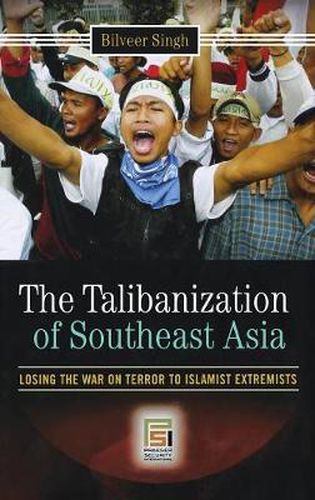Readings Newsletter
Become a Readings Member to make your shopping experience even easier.
Sign in or sign up for free!
You’re not far away from qualifying for FREE standard shipping within Australia
You’ve qualified for FREE standard shipping within Australia
The cart is loading…






Long before the terrorist attacks of September 11, 2001, awakened the United States and the Western world to the heightened level of the terrorist threat, Southeast Asia had been dealing with this threat. The bombing in Bali that killed 202 people, many of them Australian tourists, was by no means the region’s first experience with Islamic extremism, which can be traced back to the 1940s, and the Darul Islam struggle. The most recent group to emerge is Al-Jama'ah Al-Islamiyah (AJAI), the most potent Islamic terrorist organization to date in the region and the group behind the Bali bombing. Understanding the process of Talibanization in Southeast Asia, which was once an oasis of moderate Islam in the modern world, is a key to unraveling the mystery of the increased radicalization in the region.
Essentially, this involved the establishment of a political system that was more Islamic in character, either nationally or within a specific territory of a national state. This book analyzes the increasing Talibanization of Southeast Asia, a relatively new phenomenon that involves the adoption of Islamist doctrines, ideologies, and values that are largely militant in character, and that for some groups includes the adoption of violence to achieve their goals.
This has succeeded in posing one of the most serious security challenges to the region since the end of the Cold War. Jihadists are operating in small and localized cells even though the broad goals remain the same, namely, to spread sharia, establish an Islamic state, and bring down secular regimes. As most governments do not have the credibility or the expertise to diminish the threat posed by Islamist extremism, Wahhabism, and Salafism, Southeast Asia is in danger of being Talibanized in the near future.
$9.00 standard shipping within Australia
FREE standard shipping within Australia for orders over $100.00
Express & International shipping calculated at checkout
Long before the terrorist attacks of September 11, 2001, awakened the United States and the Western world to the heightened level of the terrorist threat, Southeast Asia had been dealing with this threat. The bombing in Bali that killed 202 people, many of them Australian tourists, was by no means the region’s first experience with Islamic extremism, which can be traced back to the 1940s, and the Darul Islam struggle. The most recent group to emerge is Al-Jama'ah Al-Islamiyah (AJAI), the most potent Islamic terrorist organization to date in the region and the group behind the Bali bombing. Understanding the process of Talibanization in Southeast Asia, which was once an oasis of moderate Islam in the modern world, is a key to unraveling the mystery of the increased radicalization in the region.
Essentially, this involved the establishment of a political system that was more Islamic in character, either nationally or within a specific territory of a national state. This book analyzes the increasing Talibanization of Southeast Asia, a relatively new phenomenon that involves the adoption of Islamist doctrines, ideologies, and values that are largely militant in character, and that for some groups includes the adoption of violence to achieve their goals.
This has succeeded in posing one of the most serious security challenges to the region since the end of the Cold War. Jihadists are operating in small and localized cells even though the broad goals remain the same, namely, to spread sharia, establish an Islamic state, and bring down secular regimes. As most governments do not have the credibility or the expertise to diminish the threat posed by Islamist extremism, Wahhabism, and Salafism, Southeast Asia is in danger of being Talibanized in the near future.